When we first moved to our current property, it was a wasteland with few trees and a barren yard. Blackberries and thistles thrived on the septic field, and the weeds ran rampant.
We had big plans: a perennial garden, a veggie garden, and a cleaned off septic field. So, we got to work. I weed whacked the septic with a heavy-duty blade, then went around and applied vinegar to each thistle head individually. The local nursery had trees in their ‘sale’ bin so we got them at half price and planted them around the yard to provide shade.
We hired a guy with an excavator to put rocks along the slope to the east side of the house and dig a squashed, egg-shaped hole so we could fill it will good soil. We planted a perennial garden with many plants we’d received from Dave’s mom’s garden. Red hot poker, a flowering cherry that she gave me for my birthday, stipa gigantica, Japanese maples, daisies, beauty berry, and more. We laid out soaker hoses and then top-dressed with coarse wood chips to keep the weeds down.
Dave built the veggie garden plot. A 6-foot deer fence surrounding a cedar-clad shed, with a front porch for sitting on. Eight dirt-filled beds. Raspberries, rhubarb and blueberries all around the edges. A golden chain tree in the corner. We also got a 1000-gallon cistern, to help with watering in the summer.
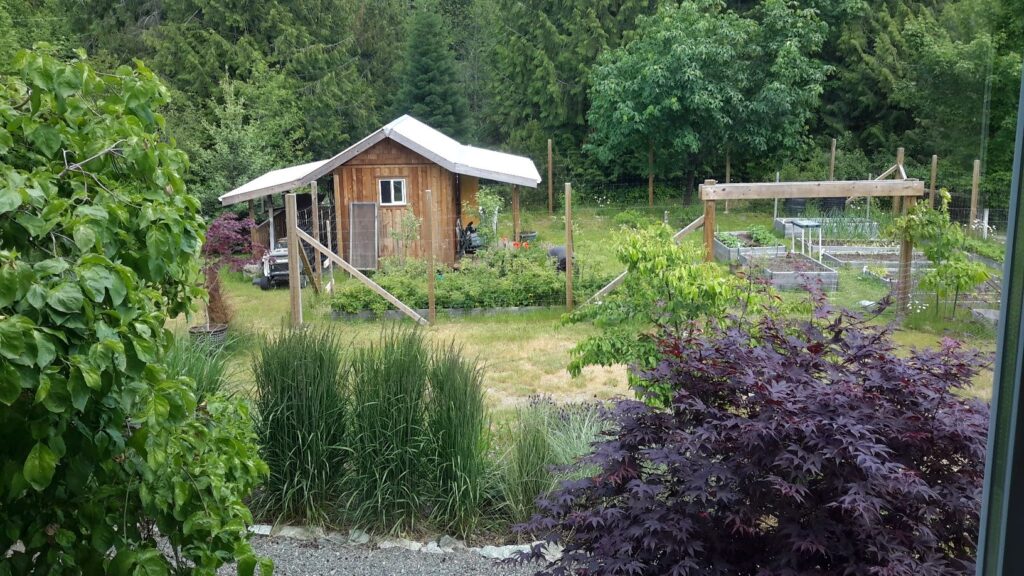
But now the veggie garden is a sad ruin, boards coming off the sides of the beds and soil trickling out onto the ground. That soil is dry and thin, missing the key nutrients needed for growth. The lines we installed to keep the raspberries in check have broken. The beds are filled with dead weeds, waiting to be disposed of.
The nearby maple has infiltrated the beds from below, making it hard to dig deep enough to plant. We have wire worm, which ruined my root crops. The raspberries started to die along the front fence, and the apple tree in that same area became anemic and stunted, leading us to think that there must be something in the soil on that side of the garden. The neighbour’s cat has used the beds as a giant litter box, and I keep coming across cat poo wherever I dig. The weeds and blackberry have come through the garden fence and are strangling the other patch of raspberries. The rhubarb is struggling. The blueberry crop is consistently declining, and those that we do get are often shrivelled and sour.
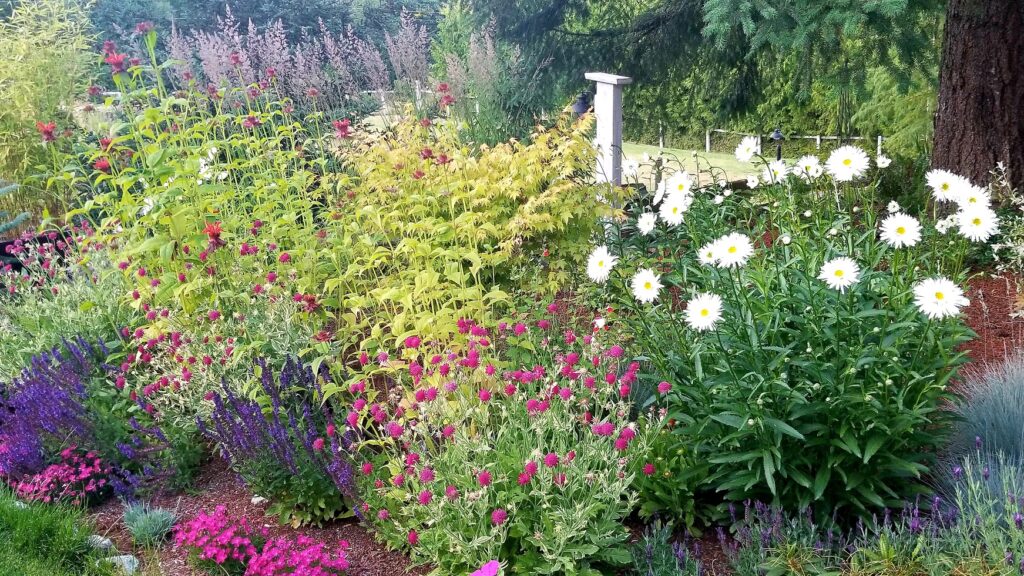
It’s disappointing to see the garden so decrepit. We had so much fun creating it and getting our own veggies and berries. We had set up the shed as a place where I could write, but then the rats got in and I had to clean everything out and we didn’t know when they’d come back. I also like to have Silah with me when I write, and she wouldn’t come in the cabin, or on the porch, just stubbornly laid in the grass. Probably sniffing cat poo when I wasn’t looking. Now my writing counter is covered in plumbing parts for the watering system, and the snowblower blocks the doorway, leaving a small space to squeeze through to get inside.
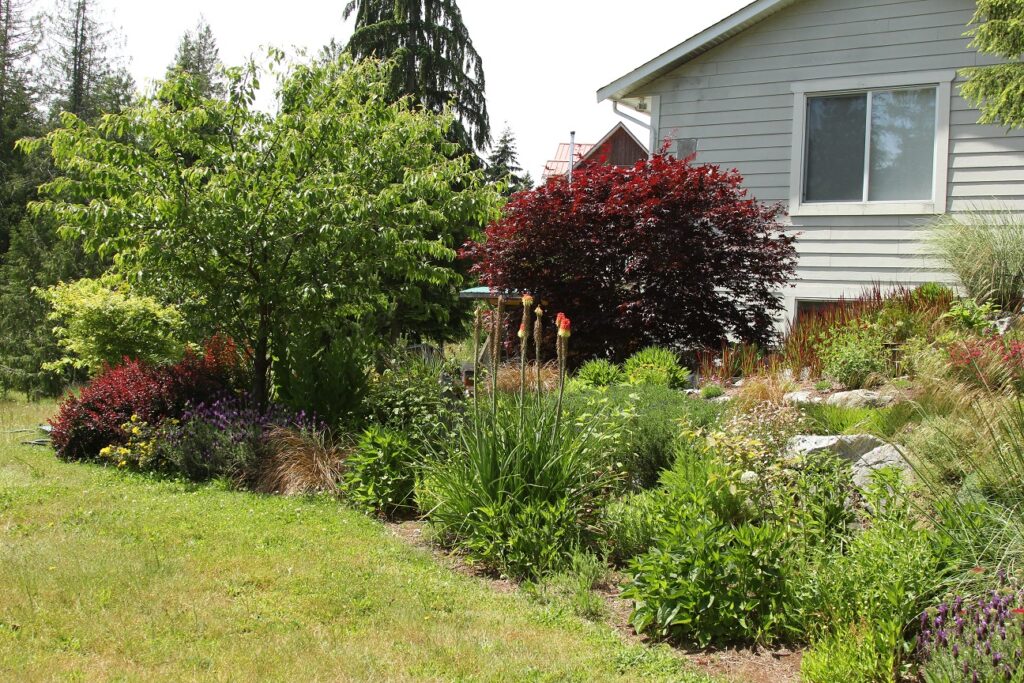
When we moved here we had plenty of water in the well and didn’t need to worry too much about running our overhead sprinkler to keep the veggies growing. But as the summers get hotter and longer, it becomes more of a luxury than a necessity to water the garden.
We began to prioritize what needed water, and hand watered every second evening for an hour at a time. We could only water so many things, though, before the well ran dry. So we had to water the veggie garden, let the well recharge for an hour, then water the perennial gardens. It got so bad that we made a spreadsheet of all the soaker hoses and the hose bibs they were attached to, and cycled through it regularly to make sure everything was getting watered, but not using up too much water. Each summer we were chained to that spreadsheet.
As for that 1000 gallon cistern: it was only good at the beginning of the season when it was full of winter rain. We no longer get rain in the summer, so once the cistern is dry, that’s it. We wait until winter for it to fill up again.
We’ve shifted our focus to the driveway and patio gardens, as those are the ones we can see from the front porch. This spring we transplanted everything we could from the perennial garden into the these two gardens. We amended the soil with sea soil, a mix of fish and wood compost. Now everything has taken off, and we’re almost back to the swathes of monarda and daisies that we had a few years ago.
It’s pleasant to sit out there and enjoy the plants, the bees, the dragonflies, the hummingbirds, and the moths. The knautia and salvia flowers dip and sway with the weight of the bees on them, and if you unfocus your eyes a bit all you can see is a sea of bobbing and nodding flower heads. The hummingbirds come to sip from the monarda, their favourite flower. Karl Foerster grasses grow up the back of each garden, and Echinacea and yarrow are starting to flower.
But it only looks nice out front. When you go through the gate to the side of the house, the weeds are taking over. Our rock garden is a great home for sedums and hen-and-chicks, and ferns that have grown out of crevices in the rocks. It also does well with the prairie crocus in spring, which has self-seeded to other parts of the garden. But the azalea and hydrangea I transplanted there last year aren’t doing well. And the weeds are in everything. The perennial garden is a mess of weeds and dying plants. Only the daylilies, flowering cherry, and barberry are thriving.
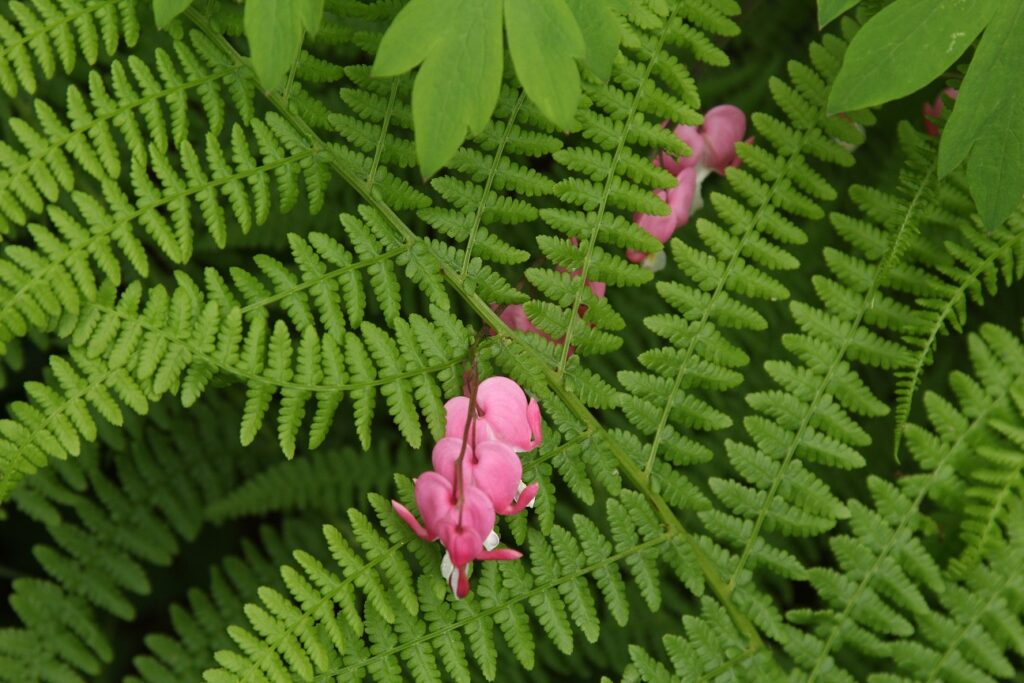
Weeds are the bane of my existence. We live in a weed seed bank, with dandelions and wild blackberry, and an especially evil weed that sends out rhizomes from which new plants grow. You pull out one plant and it’s attached to three others, and if even a small piece of root is left behind you’ll never win. The weeds grow everywhere, and we just can’t keep a handle on them. That’s another reason for letting the perennial garden go, not just water but weeds.
This fall we’ll transplant the last of the plants from the perennial garden into the patio and driveway gardens. Plant drought-tolerant plants along the outside of the path down above the perennial garden, and let the latter go. Maybe we’ll tackle some weeds. Maybe not.
Our great plans for the yard have matured into the trees we planted (all 20 of them). The letting go of the perennial and veggie gardens. The realization that drought is here to stay—the last three years have been drought-y, and this year is no different. It seems it will be a repeat of 2023, with low flows in the local river, higher air and river water temperatures, and no rain. We moved here from Campbell River, on the north Island, because we wanted to go somewhere drier. Well, we got what we wanted, and then some.
At least we still provide food for the bees and hummingbirds, safe places in the trees for birds, and even have a squirrel that likes to steal the walnuts from our tree (it’s amazing how quickly they can strip it of nuts!). There is a quail family that scurries around our property: four adults with an innumerable number of chicks in tow.
When Dave sits outside in the morning with his Merlin app it identifies up to 16 species: juncos, sparrows, Pine siskins, finches, robins, warblers and many more than when we moved here. There’s a chipping sparrow nest in the spruce tree in the yard, and we can see into it without disturbing the birds if we stand at the right spot . It’s a joy to sit on the front deck and watch the bees in the garden, or to sit on the back porch and see how the back-40 has filled in with alder, despite the depredations of the beaver that lived in the marsh for a short time.
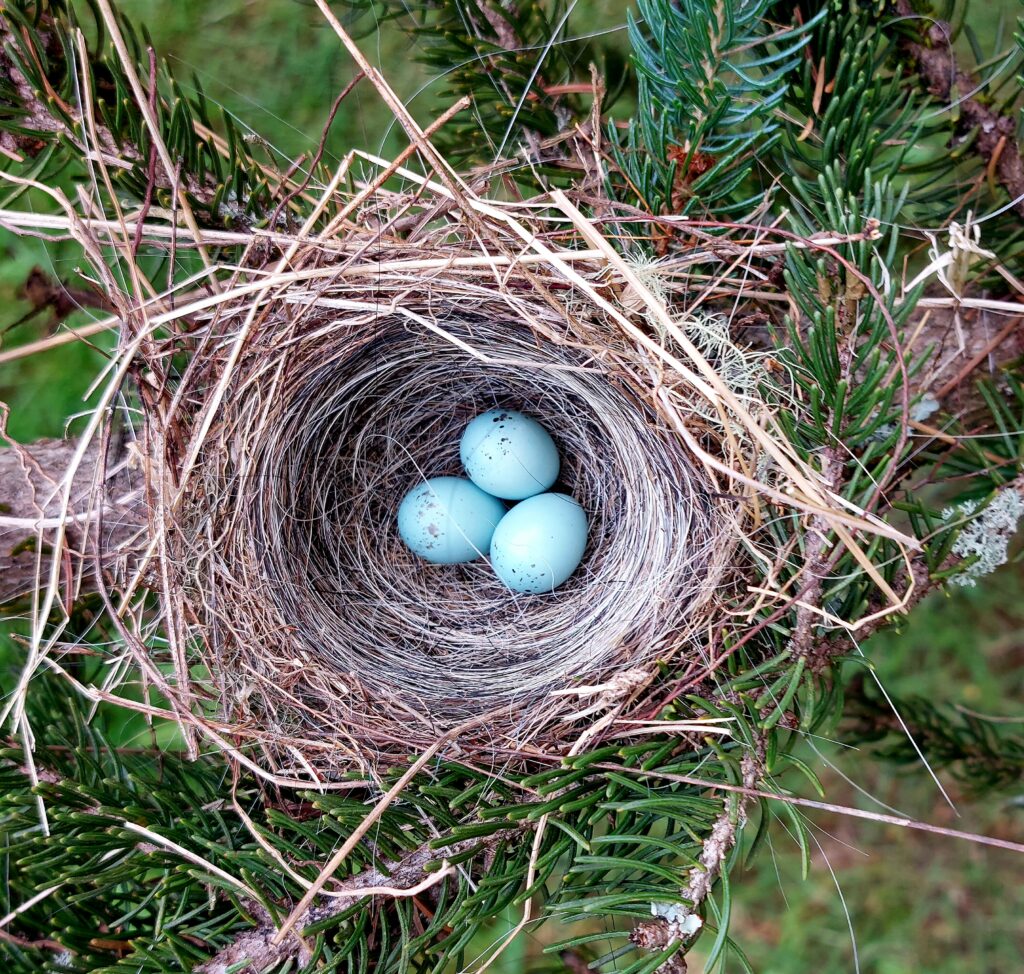
Our garden has changed almost as much as we have, and still will. I no longer have the impetus to garden—I struggle with making decisions on what to move where, and where to start with weeding or deconstructing a garden. I’m sad about the loss of the veggie garden, even though I know it’s for the best. But I’m happy about the patio garden and driveway garden – they’re gorgeous and just the size that works for me.

